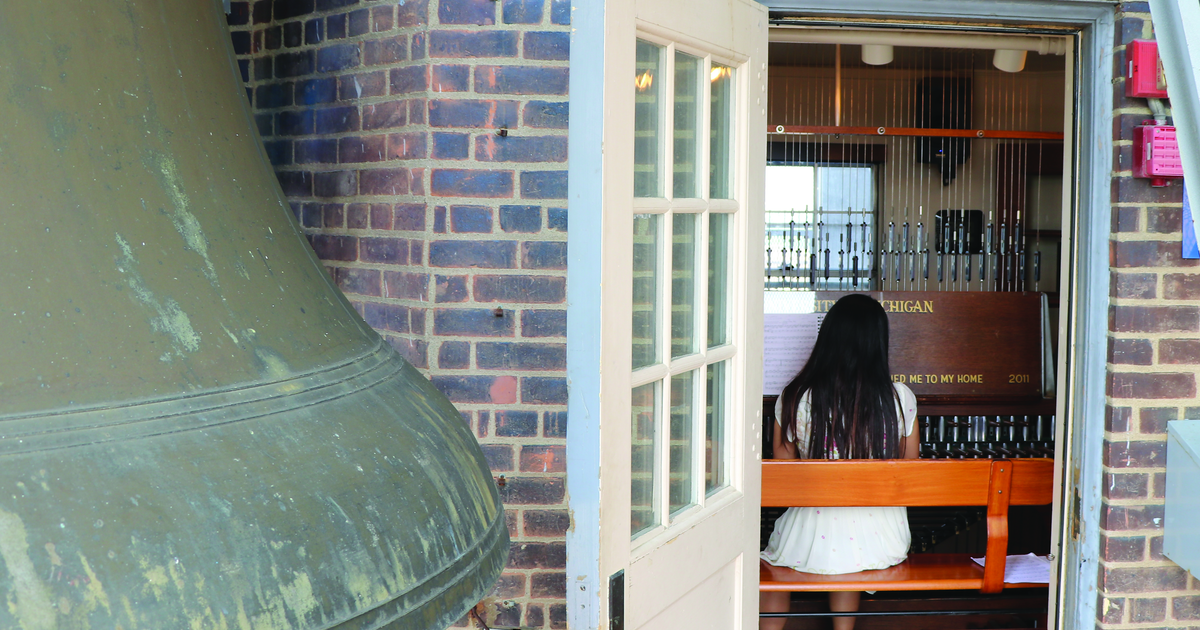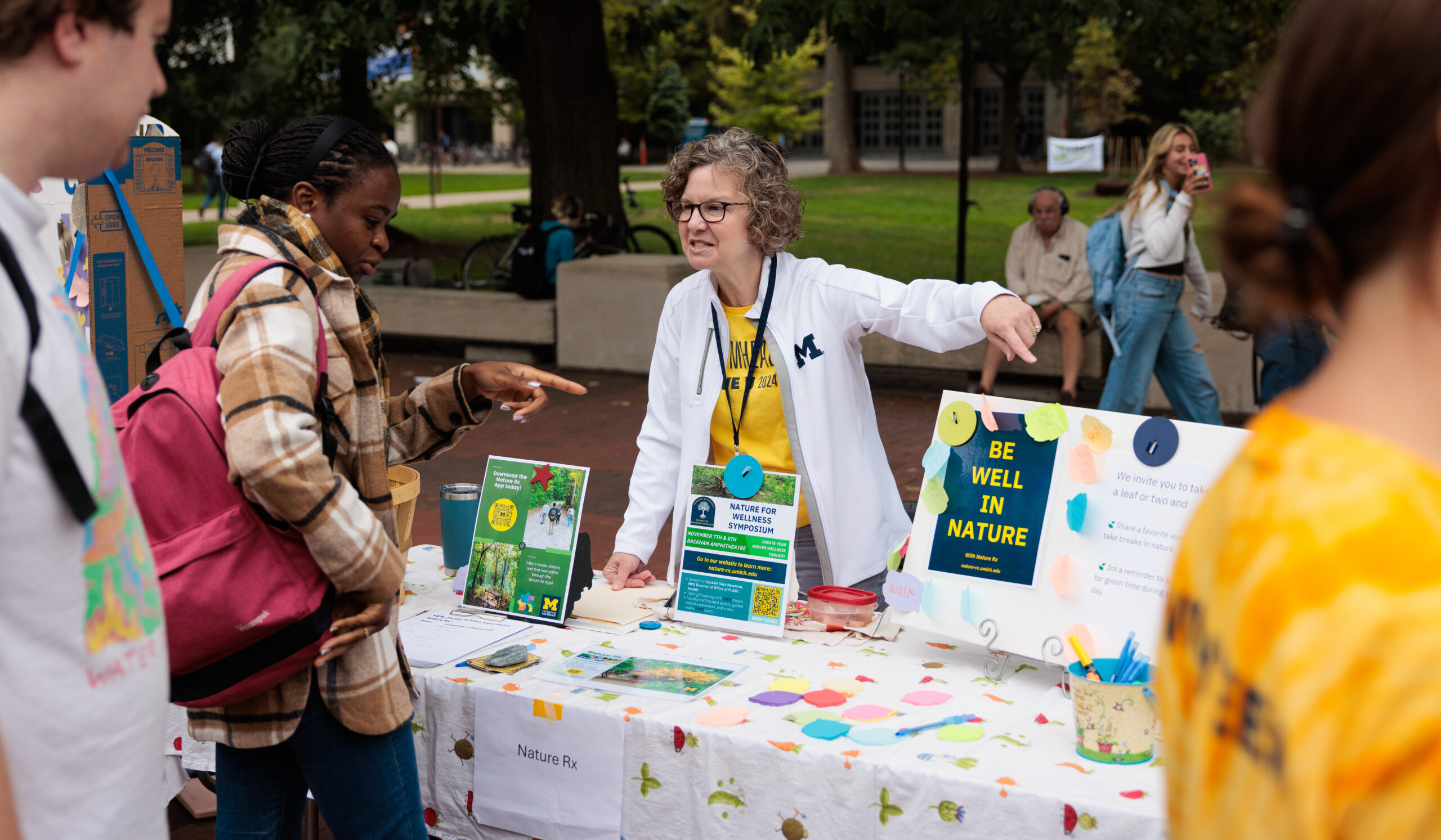To the delight of passersby, the 53 bells of U-M’s most public instrument ring daily, whether marking the hour, chiming “The Victors,” or filling the air with a jazzy tune or classic hymn. What most listeners don’t know, however, is that the sounds emanating from the 43 tons of bronze bells hanging atop Burton Memorial Tower originate in a tiny 12-by-20-foot room. Inside that cozy space on the 10th floor is the keyboard of the Charles Baird Carillon—the third-heaviest carillon in the world—along with whichever student happens to be playing it at the time.
In any given year, roughly 20 students in the School of Music, Theatre & Dance study the carillon under the direction of Tiffany Ng, an assistant professor who is also the University’s official carillonist. Playing the instrument—donated by U-M’s first athletic director, Charles Baird, in 1936—is anything but easy.
The bells, cast in England, vary in weight from the largest (12 tons), which strikes the hour each day and is affectionately dubbed “Big Baird,” to the smallest (15 pounds), which plays 4 1/2 octaves higher.

On a midsummer day, Jenna Moon (above), a graduate student pursuing her doctoral degree in musical arts, demonstrated what it takes to play the carillon, which has stick-like keys called batons. With her fists pressing down on the keys and her feet madly pumping the pedal keyboard, she activated the levers and wires that connect to metal clappers and then strike the inside of the bells. The force the carillonist applies to the keys determines the intensity of the notes.
“I like to play ‘The Victors’ really loud,” said Moon, a petite young woman from South Korea, who did just that during her half-hour session on the instrument. In between playing “Moonlight Serenade” and a Korean folk song, Moon explained that U-M carillon students can play the instrument only after learning to play one of the two practice carillons on the floor below.
“It is a big moment when you finally get to play the real carillon for the first time,” she said, explaining how crowded the room becomes during the two studio sessions held each week, when eight to 10 students cram into the small space for a class with Ng. Once proficient, students can sign up to play it between 5 and 7 p.m. each weekday during the academic year.
Visitors are allowed to enter the observation deck during the noon carillon recitals and can receive a Certificate of Achievement for climbing up 193 steps (thankfully, an elevator goes to the eighth floor) and successfully sounding at least one note that reverberates across campus.





